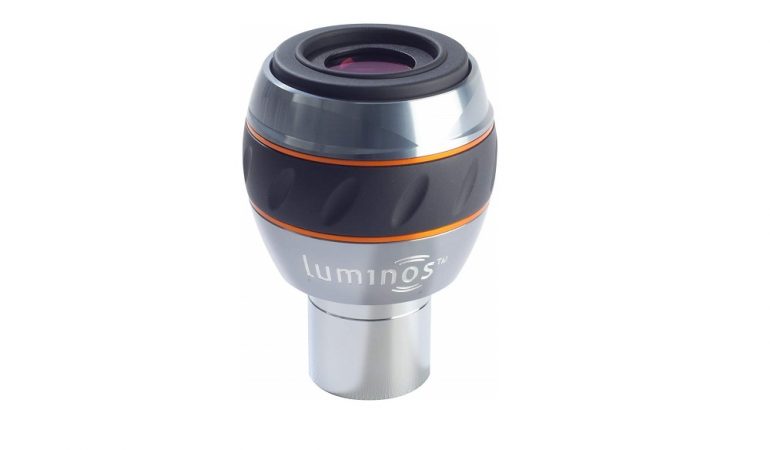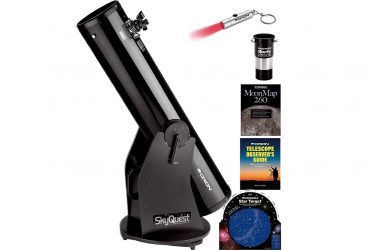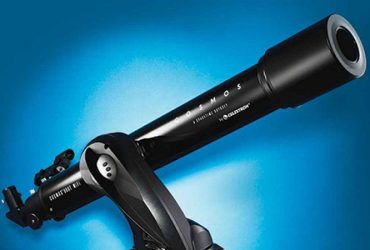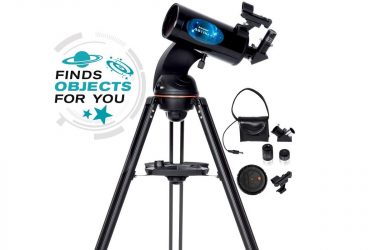Celestron Luminos Review: Best Telescope Eyepiece For Viewing Planets?
Celestron Luminos Review
-
Performance - 90%90%
-
Ease of Use - 90%90%
-
Value for Money - 84%84%
Summary
For backyard astronomers who want to kick up their game, I highly recommend the Celestron Luminos eyepieces. They are a bit more expensive than beginner eyepieces, but you’ll find they are well worth the money.
The Celestron Luminos series includes several eyepiece sizes to meet different observation needs. But is it the best telescope eyepiece for viewing planets?
Whether you need a high-magnification eyepiece for lunar and planetary observations or a lower-magnification one to see deeper into space, the Luminos series has plenty of options.
All Celestron Luminos eyepieces have mostly positive reviews and amateur astronomers rate them highly. Build quality is great across the board and the prices are pretty affordable.
Keep reading for our full Celestron Luminos review including what eyepieces are available in the series and how to choose the right one for your needs.
Celestron Luminos Review
Before we get started, here’s a quick overview of the brand Celestron, for those who like to know who they are buying from.
Celestron was founded in 1964 as a division of Valor Electronics. Celestron was the first company to mass-produce Schmidt-Cassegrain telescopes. Today, they manufacture a wide range of products including telescope accessories, binoculars and microscopes.
Celestron has their headquarters at Torrance, California.
What are you buying?
Here’s a quick overview of telescope eyepieces in the Celestron Luminos series.
1. Celestron Luminos Eyepieces (7mm-31mm)
Because celestial observations require different eyepieces depending on how deep into space you want to see, you’ll probably need several Luminos eyepieces.
The highest-magnification eyepiece they have has a 7mm focal length. It’s great for planetary and lunar observations.
The lowest-power eyepiece in the series has a 31mm focal length. It offers the lowest magnification and is ideal for deep space observations.
In between the two, you can also get a 10mm, 15mm (most popular), 19mm and 23mm eyepieces.
If you have a budget for only one eyepiece, we recommend the 15mm one. It falls in the middle of the pack, making it ideal for both lunar and planetary observations as well as deep space observations.
But if you can, we recommend getting several eyepieces for different situations.
All Luminos eyepieces have an 82-degree field of view, regardless of focal length. This is pretty impressive and makes for stunning views of objects in the sky.
You’ll appreciate the wide FOV most when using the lower-power eyepieces to observe galaxies and nebulae.
All the eyepieces are Parfocal, meaning they retain their focus when you change focal length. When you switch eyepieces, you likely won’t need to make any adjustments to regain focus. This makes it easier to switch between eyepieces.
Other features include:
- Retractable eyecup: If you wear glasses or prefer a deep eye relief, raise the retractable eyecup to add distance between your eye and the lens for more comfortable viewing. Use the rubber ring along the middle of the eyepiece to adjust the height of the eyecup.
- Lightweight aluminium construction: All the eyepieces are made from anodized aluminium. They are light but sturdy. The lightweight design is also a plus when it comes to observations (too much weight on the telescope can affect focus and image quality).
- Size compatibility: The 7mm, 10mm and 15mm eyepieces have a 1.25” barrel while the 19mm, 23mm and 31mm eyepieces have a 2” barrel. Keep this in mind when selecting the right eyepiece for your telescope.
2. Luminos 2.5x Barlow Lens
If you cannot afford to buy more than one or two eyepieces, you can replace additional pieces with the Luminos 2.5x Barlow lens.
A Barlow lens increases the focal length of your telescope, effectively multiplying the magnification. The Celestron Luminos Barlow lens multiplies an eyepiece’s magnification 2.5 times.
Let say you buy the 10mm Luminos eyepiece and attach it to a 1,000mm telescope. You’ll achieve a 100x magnification.
If you want higher magnification to observe the moon’s craters, you can get the Barlow lens.
Add it to your setup and now you have 250x magnification. That’s more than what you’d get by buying the 7mm eyepiece.
The Luminos Barlow lens has a 2” barrel. But it comes with a 1.25” adapter, so it is compatible with both 1.25” and 2” eyepieces and telescopes.
It has the same lightweight bur sturdy anodized aluminium construction as the Luminos eyepieces.
A brass compression ring holds eyepieces securely in place, ensuring no movement during observation.
How easy is it to use?
All Celestron Luminos eyepieces are designed for amateur and hobbyist astronomers, meaning they are easy to set up and use.
The rubber ring around the centre of each eyepiece provides a good grip, making it easy to hold the eyepiece even when your hands are wet or you are wearing gloves.
The Parfocal design of the lenses also makes the eyepieces easy to use. If you want to switch to higher-powered eyepiece to better observe the lunar surface, you can do so without having to re-adjust the telescope again to regain focus.
Eyeglass wearers will appreciate the height-adjustable eyecup. By turning the rubber ring, you can lower it completely (ideal if you don’t wear glasses), set it somewhere in the middle or raise it to the highest point for maximum relief.
What accessories are included?
All Celestron Luminos eyepieces come with a dust cap and a cleaning cloth. The Luminos Barlow lens also comes with a 2” to 1.25” adapter.
Key features of Celestron Luminos
Pros:
- Good value for money.
- Easy to use.
- High quality celestial views (as long as you choose the right eyepiece).
- Adjustable eyecup.
- Threaded to accept filters.
Cons:
- A bit more expensive than basic beginner eyepieces (but still great value for money).
Anything else you should know?
One feature I did not mention is that the Celestron Luminos eyepieces accept filters.
The insert barrel of the eyepieces, including the 2.5x Barlow lens, is threaded, allowing you to attach a filter to the eyepiece.
This is handy if you need to attach a light pollution filter or some other type of filter to enhance your observations.
Conclusion
For backyard astronomers who want to kick up their game, I highly recommend the Celestron Luminos eyepieces.
They are a bit more expensive than beginner eyepieces, but you’ll find they are well worth the money. The multi-coated optics on the eyepieces make for much clearer and richer views of the skies.
The build quality is also impressive. Unlike cheap plastic eyepieces, Luminos eyepieces are aluminium. Expect to use them for years.
Where to buy?
- Amazon UK: >>Click here to check today’s price




